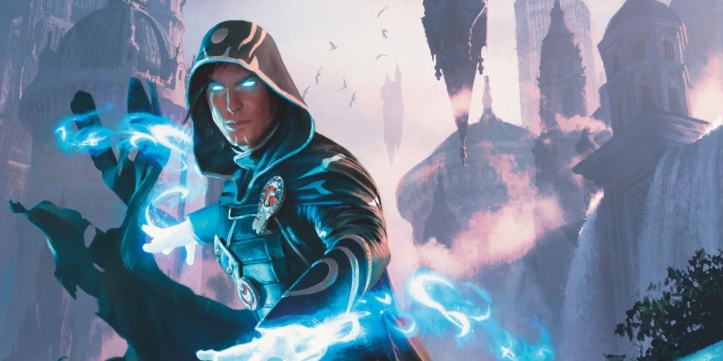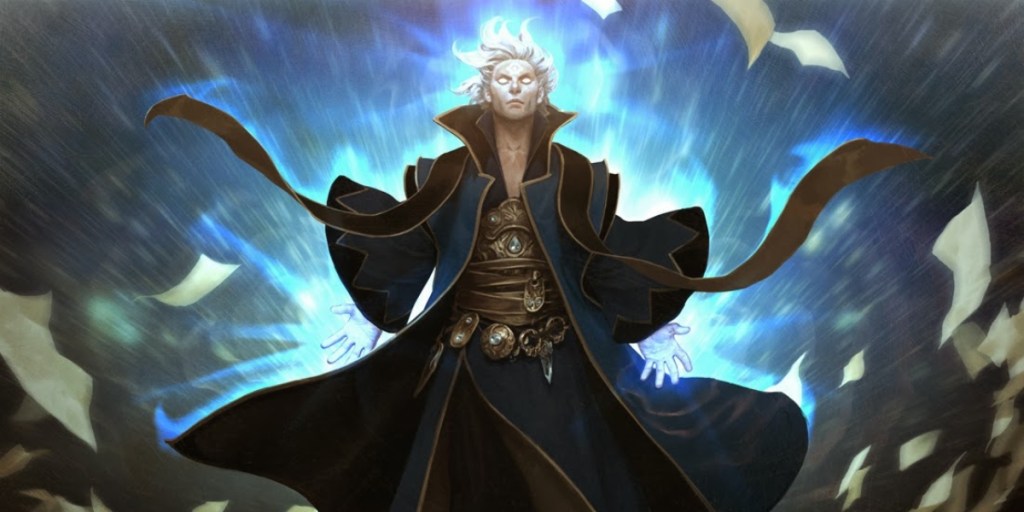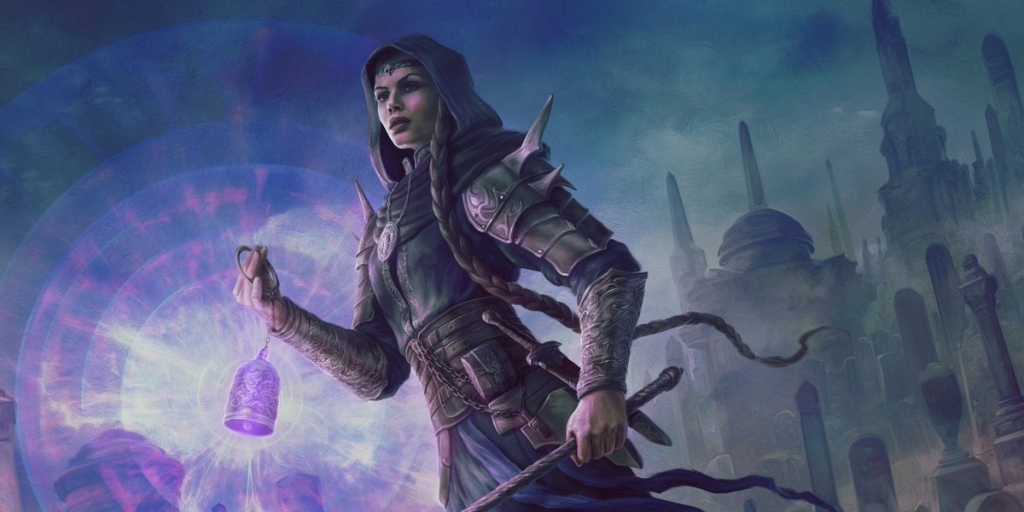Spellcasting is a significant part of Dungeons & Dragons Fifth Edition. Every class, even the magic-averse Barbarian, can learn to spellcast somehow.
There’s a difference, however, between being dabbling in spellcasting and being a world-shaking mage who can do almost anything they turn their mind to.
Much of the difference comes down to your character’s D&D 5e class. It makes sense that a Wizard in D&D 5e has much better spellcasting at their disposal than even the most arcane Fighter. However, their subclass is also vitally important.
Some of D&D 5e‘s best spellcasting classes get taken to another level by particularly effective subclasses. These archetypes might vastly bolster the class’ D&D 5e spellcasting in some way, or come with other features that supplement their overall effectiveness to a terrifying degree.
The Aberrant Mind Sorcerer Has Almost Unmatched Potential

The Sorcerer has long been considered D&D 5e‘s worst spellcasting class, or at least the hardest to build. Although the Sorcerer can become a terrifying specialist at any one area of magic, their restricted spells known and Sorcery Points make every choice life-or-death.
Tasha’s Cauldron of Everything goes in the other direction with its D&D 5e Sorcerer subclasses. Both the Aberrant Mind and the Clockwork Soul get a vast list of bonus spells, with the option to change them out for even more versatility.
The Aberrant Mind Sorcerer in D&D 5e can get almost any Divination or Enchantment spell from the Sorcerer, Warlock, and Wizard spell lists by swapping out their Psionic Spells. At this point, it’s almost unfair to the older subclasses like Divine Soul.
Even if the player doesn’t change any spells, the Aberrant Mind Sorcerer gives them an immense list full of combat and utility options any caster would love.
That’s a lot, but it’s not all.
The D&D 5e Aberrant Mind Sorcerer’s Psionic Spells feature makes them an even better spellcaster. They can cast their subclass magic directly with Sorcery Points at a better exchange rate than other Sorcerers get. On top of that, they cast without components. This makes their spells stealthy and impossible to Counterspell.
Sorry, Draconic Bloodline Sorcerer, but you’ve been power crept hard.
School of Divination Wizard Refreshes Spell Slots

The School of Divination D&D 5e Wizard subclass more than makes up for its specialisation’s lacklustre combat performance.
Divination spells are plenty useful in D&D 5e, providing enough versatile and specific utility to make DMs tear their hair out. The School of Divination Wizard doubles down with other top-tier magical features.
Portent is one of the best Wizard subclass abilities in D&D 5e. The player rolls dice at the beginning of the day and can force creatures to use those rolls later on. The dream is a Natural 1 or 20 in the can to ruin or double an attack, but a guaranteed high, low, or average roll is still ideal.
However, the School of Divination Wizard in D&D 5e gets more. Expert Divination restores spell slots every time the character casts a Divination spell. Even though the refreshed spell has to be of a lower level, it encourages the player to spam their magic in combat and restore their slots through utility spells.
This combines with the D&D 5e Wizard’s Arcane Restoration feature to make a character who can cast many times more spells than their nearest competition. Not that your party members are competition.
The Chronurgy Magic Wizard Warps the Game

Every D&D 5e subclass from the Explorer’s Guide to Wildemount is near the top of its class’s power level. Nonetheless, the Chronurgy Magic Wizard goes one step further, pushing the envelope of the game itself.
Most of its features are broadly useful in any situation. Forced rerolls make enemy attacks less accurate or the Wizard’s own D&D 5e spells better. Bonuses to Initiative let them get off devastating AOEs before the Barbarian charges in, yelling. Momentary Stasis is a welcome crowd control option that doesn’t even require Concentration.
However, the Chronurgy Wizard goes from impressive to “DM-terrifying” with its dubiously-worded Arcane Abeyance feature.
It follows a similar theme to D&D 5e magical items or Artificer features, casting a spell to store it for later, potentially letting an ally use it. However, Arcane Abeyance lacks one thing that these abilities have: a requirement that the stored spell takes one action to cast.
A Chronurgy Magic Wizard in D&D 5e can rid many spells of their limitations by effectively turning them into a one-action cast ahead of time.
The possibilities for this are limited primarily by the player’s imagination. Find Familiar as an action is useful, but not game-warping. D&D 5e‘s Glyph of Warding in one action can be vicious.
Arcane Abeyance in D&D 5e becomes much worse when the player casts Hallucinatory Terrain mid-fight to rewrite the battlefield. One of its most extreme uses is casting Leomund’s Tiny Hut during combat to let the characters catch their breath after using all of their Action Surges.
Oh, and this can happen every short rest.
Some DMs might houserule sensible limitations on this feature and make it merely yet another very strong tool in the D&D 5e Chronurgy Magic Wizard’s arsenal. However, I can’t guarantee your DM will do that, leaving it as one of the best Wizard subclasses in D&D 5e.
Twilight Domain Cleric Makes Damage Negligible

The Twilight Domain Cleric is unusual as one of D&D 5e‘s best spellcasting subclasses. Its additions to the Cleric’s excellent spell list are fairly low-key. None of its Domain Spells are game-breaking. It doesn’t terrifyingly overhaul Cleric spellcasting.
Instead, its subclass abilities are so powerful it would be remiss of me not to include it on any list of any of the best subclasses in D&D 5e.
It starts with heavy armor, something most D&D 5e spellcasters would love. Then, also at first level, it gets unlimited advantage on Initiative checks (its own or allies’) and superior Darkvision.
Later levels add to the fun with flight a limited number of times per day in darkness. However, none of the D&D 5e Twilight Domain Cleric’s abilities come close to its awe-inspiring Channel Divinity: Twilight Sanctuary.
Channel Divinity: Twilight Sanctuary gives 1d6 plus Cleric level temporary hit points to every ally who starts their turn within 30 feet. Every turn, without requiring anything beyond the initial action to activate it.
This starts off high and quickly scales out of control. With up to 26 temporary hit points per turn, a D&D 5e DM basically has to focus fire on one player to do any sort of lasting damage. If they spread the fun around, they won’t even touch many players’ hit points.
As the D&D 5e Twilight Domain Cleric’s Twilight Sanctuary is a Channel Divinity, it can trivialize one fight per short rest, every short rest, later growing to two or even three. Without Concentration. On top of the D&D 5e Cleric’s top-tier spell list.
Even though its spellcasting is roughly level with other Clerics, there’s a reason that more DMs ban the Twilight Domain than almost any other D&D 5e subclass.
College of Lore Bard Can Cast Almost Anything

The Bard established a solid identity for itself in earlier D&D editions as a jack-of-all-trades class that a skilled player could break the game with.
D&D 5e made the bold step of making it a king-of-all-trades that comes close to breaking the game by default. Please don’t take this as a criticism, I love D&D 5e Bards.
The College of Lore looks at the Bard’s versatility and high-level spellcasting, two of the best class identities in the game, and decides to just do more of those things.
The D&D 5e College of Lore Bard’s skills look relatively tame at first glance. More skills, better skills, and more Magical Secrets.
This last ability is what makes the Lore Bard one of D&D 5e‘s best spellcasting subclasses. From sixth level, the College of Lore Bard can take almost any spell its player wants, with up to eight choices coming from any spell list in the game.
A player can turn their Lore Bard into anything they want. A combat monster, a peerless support character, or a utility toolbox with a solution for any possible problem are all viable D&D 5e Bard builds.
College of Lore Bards have a further unique niche if they use one of their Magical Secrets to pick up Counterspell. They’re also the best Counterspellers in the game with Jack of all Trades, Peerless Skill, and the spell Glibness. Just don’t tell your DM we told you this.
These have been five of the best spellcaster subclasses in D&D 5e, whether they add any particular spellcasting value or not. Which other subclasses do you think make the difference between a good spellcaster and a great one?
If you want to look at other class roles in D&D 5e, check out ‘D&D 5e: Five Tank Subclasses To Protect Your Party‘.
If you think spellcasting is cool but also want to hit people with swords, ‘The Five Best Gish Subclasses in D&D 5e‘ is for you.
Please like this article and check out more from Artificial Twenty if you’ve enjoyed the content. If you or your friends want to stress out a DM, share this article around and show up with a table of horrifying spellcasters. Thanks!